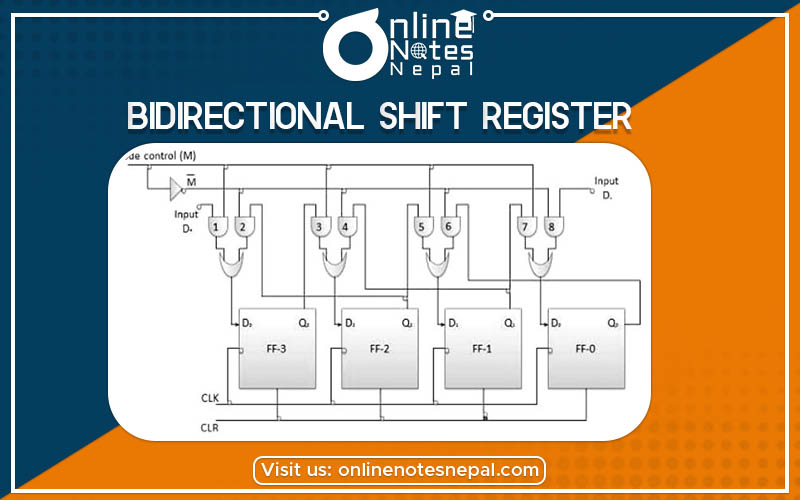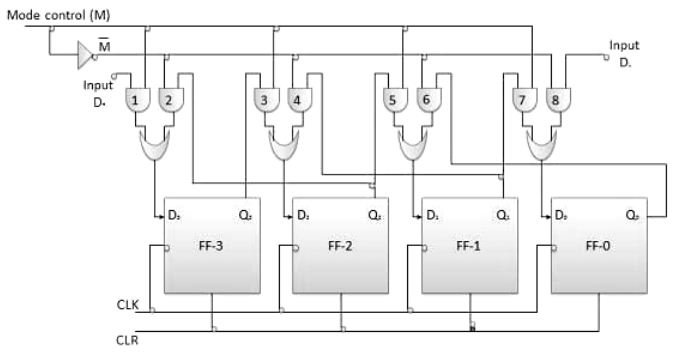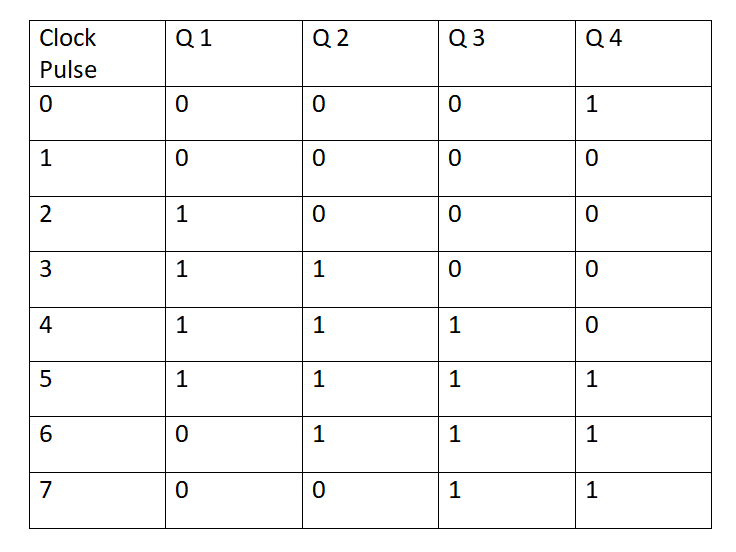Published by: Nuru
Published date: 22 Jun 2021

Bidirectional Shift Registers are those registers in which the data and instructions can be shifted either in the left or right direction.
The registers known to us till now are those which can the data only in the right direction. These have the effect of successively dividing the binary numbers using 2. And if there is a reverse operation, it has the effect of multiplication using 2. But in the bidirectional shift register, it can perform both operations. We call this register also the reversible shift register because it can shift data left or right.
Same as the other registers, we can also construct this register using the D flip-flops.

Fig: A Bidirectional Shift Register
In the figure above, when we keep the Mode Control input as 1, then the circuit performs the right shift operation. And 0 in the control input allows for the left shift operation. Now, if the Mode control is 1, gates 1 through 7 are enabled. And the state of Q output of each of the flip-flop passes through the D input in the left of the following flip-flop. When we start the clock pulse, there is shifting data bits from one place to the right. Now again, when the Mode control is at 0, gates 2 through 8 are enabled. And the Q output of each flip-flop passes through to the D input of the previous flip-flop. Again when the clock pulse occurs, there is shifting of data bits from one place to the left.
